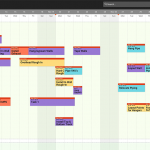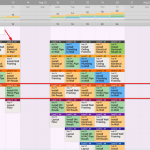(By George Hunt, Lead – Pre-Sales/Sales Engineering Touchplan) When making improvements, we have a tendency to focus on adding new structure or practices to our daily routines. We don’t look enough at practices that we are already doing and what we could stop. Oftentimes, this can make just as large of an improvement as adding something new. Many of our common practices today actually do more harm to our projects than we realize. When it comes to Project Production Management and using Takt, these practices come in direct opposition to the production laws.
Stop starting work that isn’t “ready”
How many times have you been in a weekly planning meeting, and someone is told that they need to start work in an area because “the schedule says we should be here?” Chances are that this happens quite often. Teams look at this as a way to push along trades that may be falling behind or get a new trade onto the job as soon as possible. It is also a regular practice to measure the percentage of planned activities started per the master schedule. We need to STOP doing this.
We have discussed the idea of making work ready throughout this series. This is an absolute MUST before starting work. If we continue to start work that is not ready, it will add unnecessary Work in Process (WIP) to our system and make everything take longer. On top of that, we know that speeding up trades who are not the bottleneck will do nothing to speed up the project as a whole. In fact, it might end up slowing us down if the work they are putting in place will be in the way for someone else. The weekly make-ready process with the team is a crucial step for all parties to understand what is ready to be started and what is not. Sometimes it is better for the project overall to hold off on starting work.
Stop planning to 100% capacity
If we are paying for resources (people or equipment), we want to make sure that they are working. Because of this, we generally plan for our crews to be working at 100% of their capacity when they are on the jobsite. While this does make sense in some respects, it leaves us vulnerable to the inevitable variation that will come our way. If everyone is working at 100% capacity we need to pull them from their planned work to address the change. This leaves work needed for other trades unfinished, which can send ripples through the entire project.
This is where a properly managed capacity buffer solves our problem. Having additional crew members working specifically on workable backlog allows for them to be pulled in to address variation when needed. This gives us the best of both worlds. Everyone will be working on value-added work, but we will also be able to handle the variation when it happens. The key is planning for this from the start.
Stop operating with a “plan of the day” mentality
If you have ever spent time working around a design or construction project, you would probably agree that “firefighter” could be added to your resume. It is very common to hear folks describe the scenario where, based on something that happened yesterday, they need to redirect the crews in the morning to go address the issue. Too often we will fall into the habit of operating on this “plan of the day” routine and find ourselves in a complete reactionary mode. This has a huge impact on the productivity of crews, not to mention the impact of changing plans every day will have on the overall project. Introducing more variation to the plan never has good results.
Working within a proper set of buffers can help with this. If there is standby capacity, it can be used to take care of the issues that arose as discussed earlier. Additionally, having a workable backlog can give crews somewhere to go if the problem area requires some replanning and work to stop. The key is to approach the issue as a team and plan for the solution. We want to keep work flowing and steady. Make sure that the work that needs to be done to maintain the overall flow is held as the priority.
Throughout this entire blog series we have introduced you to the fundamental science behind Project Production Management, takt planning and control, and a number of practices that you can start doing, and now some practices that you should stop. The field of Project Production Management is far broader and more in-depth than everything we have written within this series. We hope that it can all serve as a small primer for you to begin researching on your own and discover how PPM can drastically improve your project results









